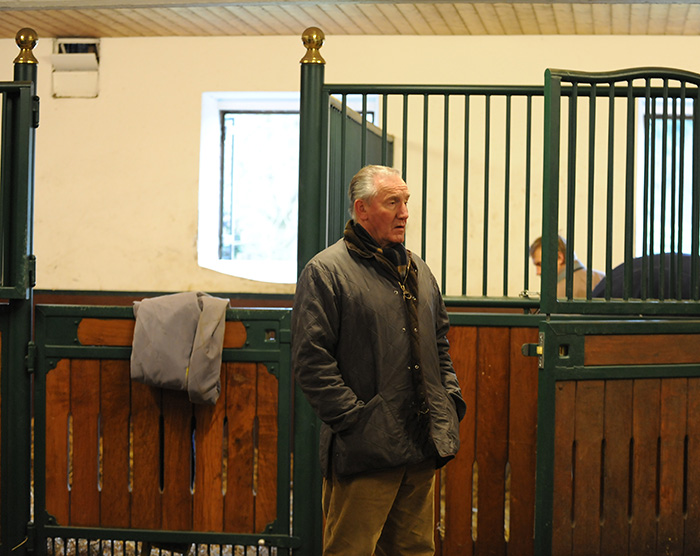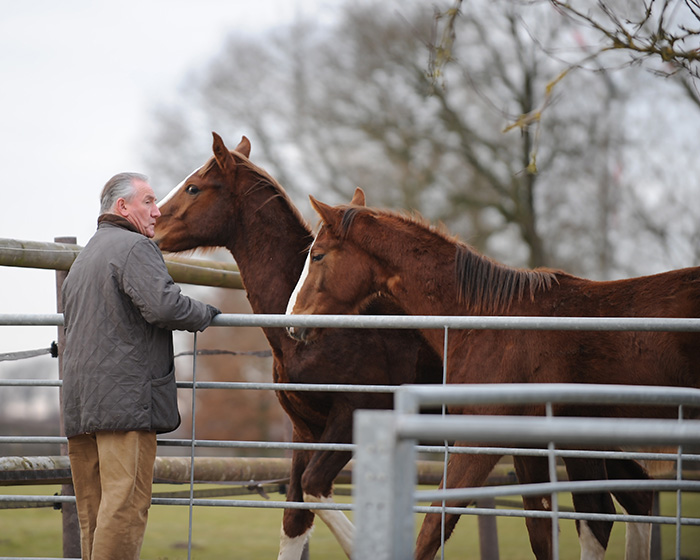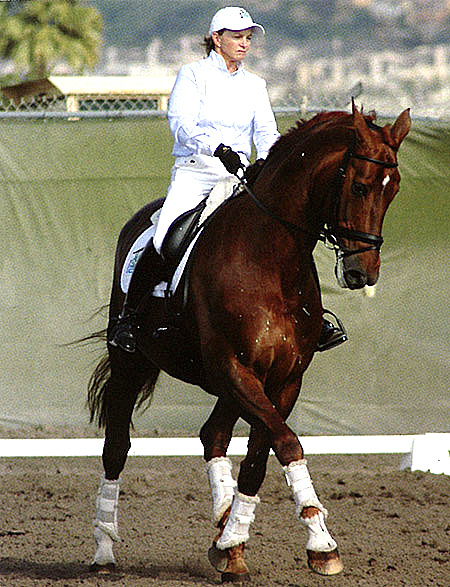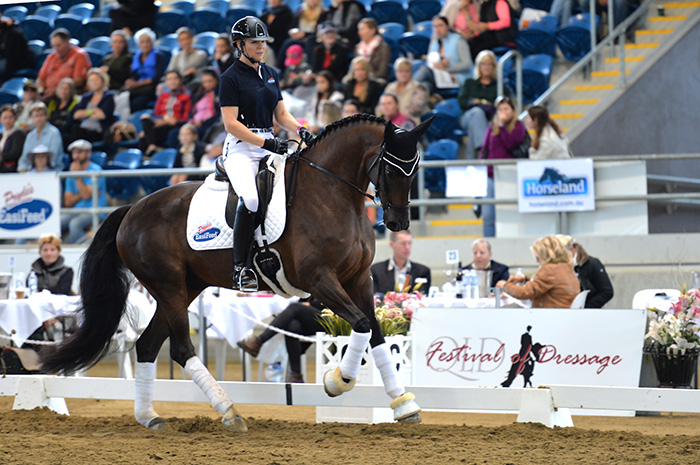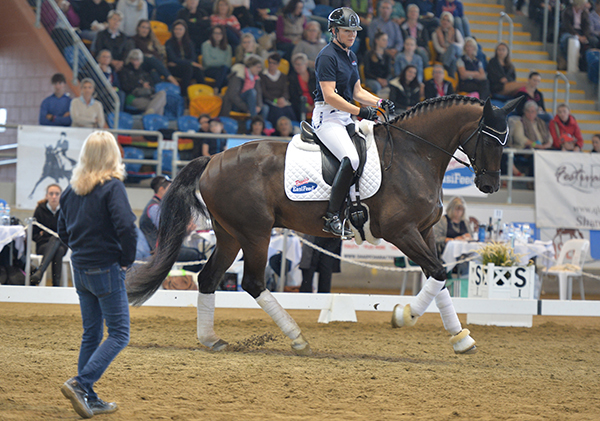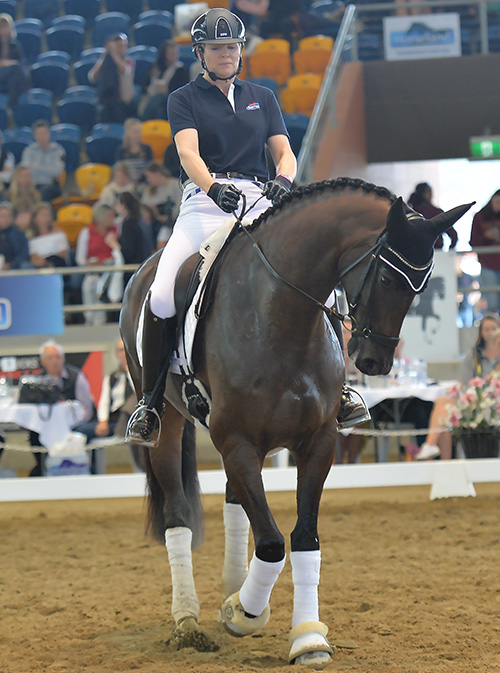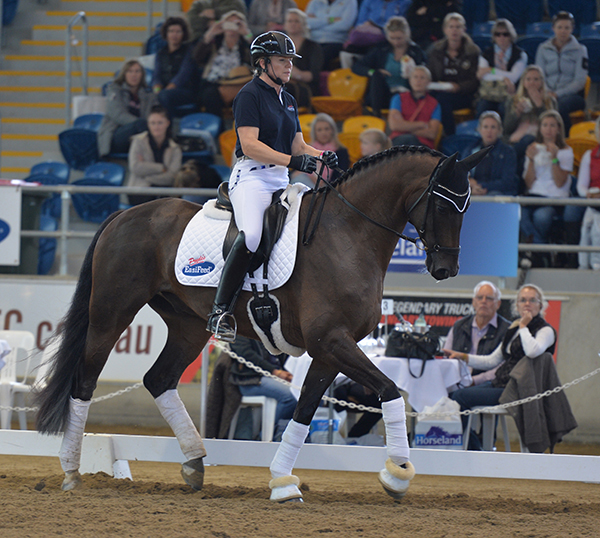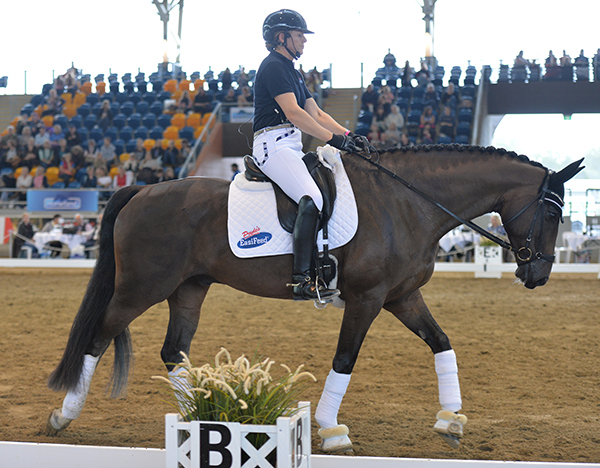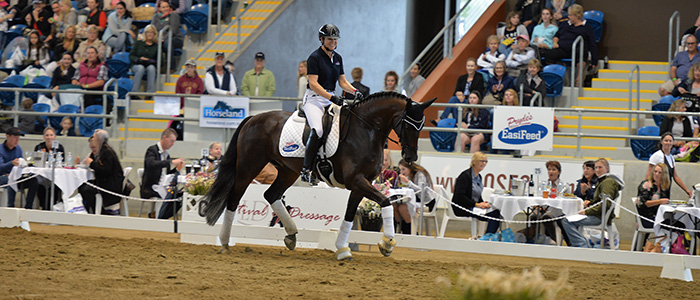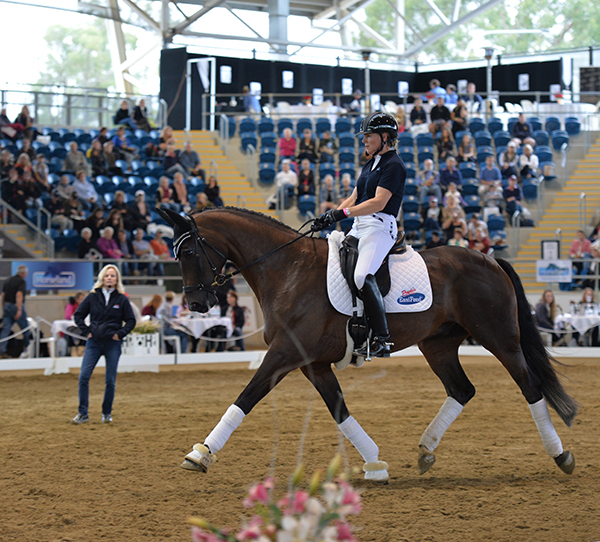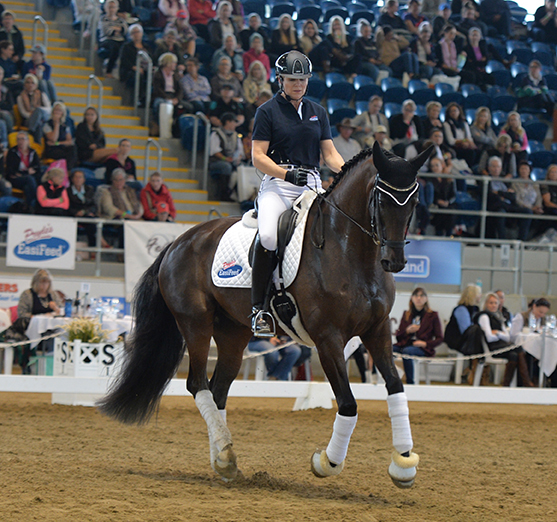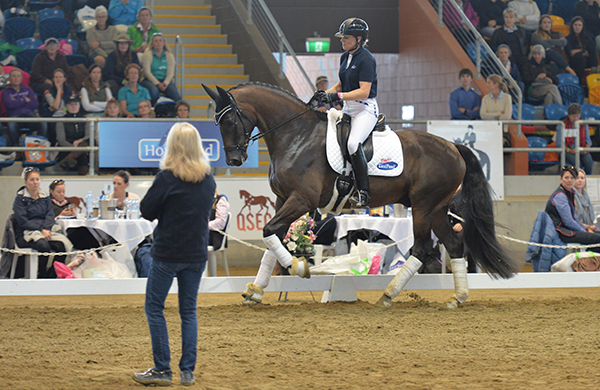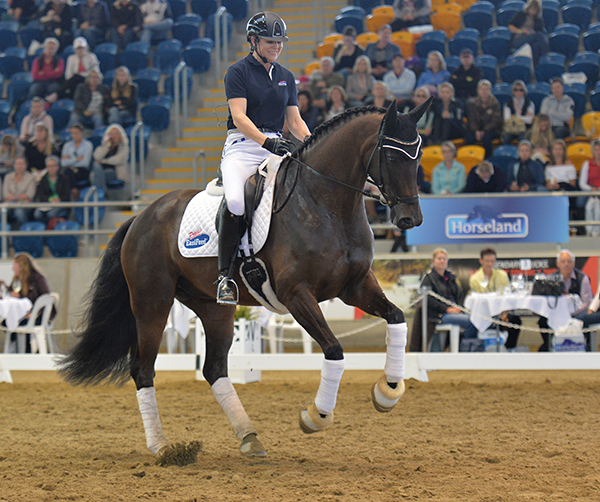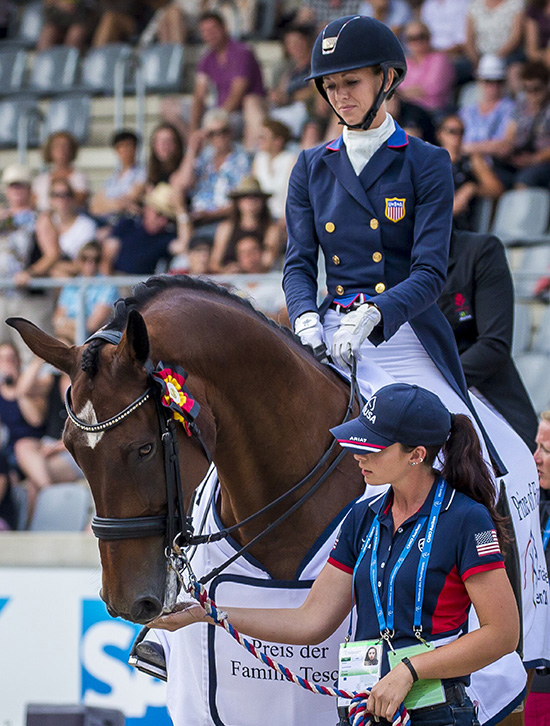One of the many interesting facets of the art of dressage is the way knowledge is passed on, from one great teacher to the next. One of today’s super trainers, Debbie McDonald pays tribute to the German master coach, Klaus Balkenhol…
“The biggest part of my coaching was in Germany with Klaus Balkenhol. I’ve had some great people that have helped me coaching-wise.”
Klaus’ philosophy and his methods are wonderfully simple…
“What I love about Klaus is that he knows exactly when to back off, when he knows a horse has maybe had enough for the day. He never over-does a horse. I’ve never seen a man walk into a barn like he does, and every single horse nickers to him, because he loves his horses and he spends time with them.”
Do you think experience is more important than having great theory?
“There’s no doubt about it, I think experience is vital because you can have all the theory in the world, and have read all the books in the world, but that doesn’t give you the feeling of what it takes to make it happen – and no two horses learn the same way. You have to have enough experience to know that it doesn’t have to be done out of straight strength and roughness. It’s a matter of communication and I think experience is really where we all get that.”
You have to let your young horse go FORWARD…
That was Debbie’s message to Jenny Gehke in her Masterclass – but first a little background on Jenny’s horse:“He’s a Westfalien, by Steinberg, he’s nearly seven,” Jenny told me. “A dear friend of mine, Rose Deo bought him for me to ride in February last year, and he arrived in June. I’ve had him at home for nearly a year.”
“I’m at the point where I didn’t feel I needed any more ribbons at Novice, so I didn’t take him out until I felt he was where I wanted to be. I have taken him to some clinics with Leonie Bramall – I did a couple of Novice tests on him for 74, 75 scores.”
“He’s a really sensitive horse, so apart from training with Debbie, one reason for bringing him here to the Festival was the opportunity to get him out and get him used to this sort of atmosphere. He’s such a willing, trying horse, he’s a delight to ride. I’m a lucky girl, he’s the best one I’ve sat on.”
Jenny and Senator were into that that scary big arena for their lesson. The second master class is sub-titled: Using the Lateral World to Develop Collection, but Debbie stresses that we should only expect the beginnings of collection with such a youngster:
‘He’s just a six-year-old, collection is a huge ask, we should be thinking about developing collection.”
“This horse gets a little tight in the back, you can see it better in the canter – and this is an important point in the horse’s life to change that through exercises.”
The exercise is canter, trot, stretch: “Stretch up not back, use a little inner thigh. When you collect, the hind legs get short and choppy, when you feel that, don’t stay there. It is important that he learns he has to canter long in collection. At the moment the strength is not quite there in canter to sustain a big stride. We want a ground covering canter, not running.”
“Pick him up now and ride a little forward / back. Some leg yield, supple up both sides, but never steep leg yields, light leg into the outside rein.”
“Ride a little haunches in, get him to reach under with the inside leg. Pay attention the ears are level, never risk more angle or bend if you lose that. You can see he’s a little weak, his hind legs are a touch wide. Shoulder in is going to help that, it will strengthen the hind legs and help the canter too.”
“Give the horse a chance to walk in between the exercises, he needs the oxygen to get to his muscles.”
“Leg yield helps the horse become supple in the back, the neck and the shoulders. You need to find a zone where he swings, never lose that quality of the trot to ride the movement.”
“How many riders have felt that because the horse is hot, they can’t put leg on? Then you end up with a horse that is hot, but also behind the leg.”
“On the short end, is the best place to show off the trot, that’s where three judges are going to see the trot. Now back to walk, and when he is walking tight, let him go. He gets a little curled back, guide with the contact so he pulls you out in the walk.”
Back into trot and Debbie wants a little position:
“A little shoulder fore until you feel you don’t need much inside rein, just your upper thigh.”
“Come on the circle round me, play haunches in, out to shoulder fore – strictly off your legs. Keep his hind legs always under him after the haunches in. Even in a collected moment, you should feel you could give the rein and remain collected. The biggest thing to realise is that you don’t need your hand. Shoulder in circle, then quarters in, then give your hands.”
“A horse like this, in the wrong hands, could be trained too fast and ruined. He is very forward and sometimes with a very forward horse, we think we don’t need our legs – but when you get to tempi changes, you will discover that you do need legs. On the canter walk transition, here you feel a little vulnerable, use a little walk shoulder fore, to get him listening to your inside leg.”
Suddenly the black gelding loosens and lets go his back in the canter:
“Now try a flying change…”
The horse is surprised and misses the change.
“He was taken by surprise then. Use a little warning leg to let him know you are going to do something. Canter, eye up, think straight, that’s the girl, SUPER, pet him.”
Next time, Senator beats Jenny to the punch: “He did that, he’s too clever. You have to be really sitting.”

“A horse like this feels really amazing, but he is only six. You have to play with him. Sure you want to get to Grand Prix but you have to preserve what he has. Work him no more than four days a week, no more than forty minutes a session, and get out and ride some trails with him.”
Debbie’s pupil takes no risk of frightening Verdades in the presentation at Aachen – Rebecca Ashton image
Debbie is very much opposed to young horses competing in Grand Prix:
“It saddens me to see horses doing Grand Prix at eight years old. If you want one still doing Grand Prix when he is fifteen, don’t go Grand Prix at eight. They have such an innocent brain at eight, and they can do Grand Prix, it’s so easy – then comes the Awards Ceremony. Next time, oh oh there’s something in there… If you throw them into the fire too early, it comes back to bite you.”
![]()
Would you like to breed your own dressage star? Consider D’Olympus

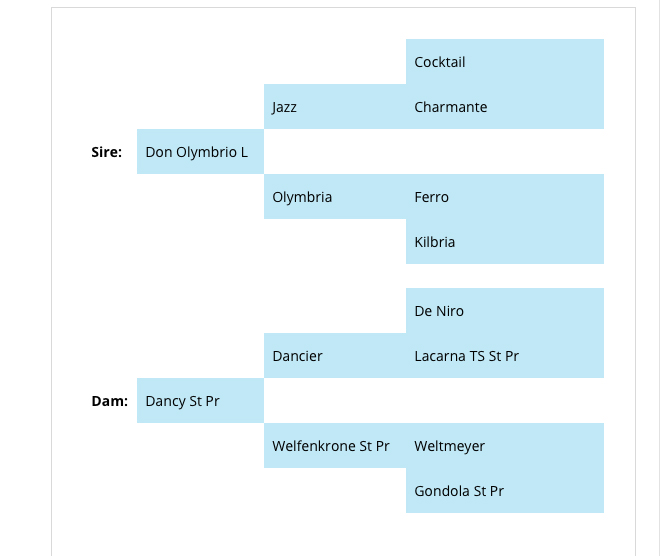
Available from IHB – www.ihb.com.au



